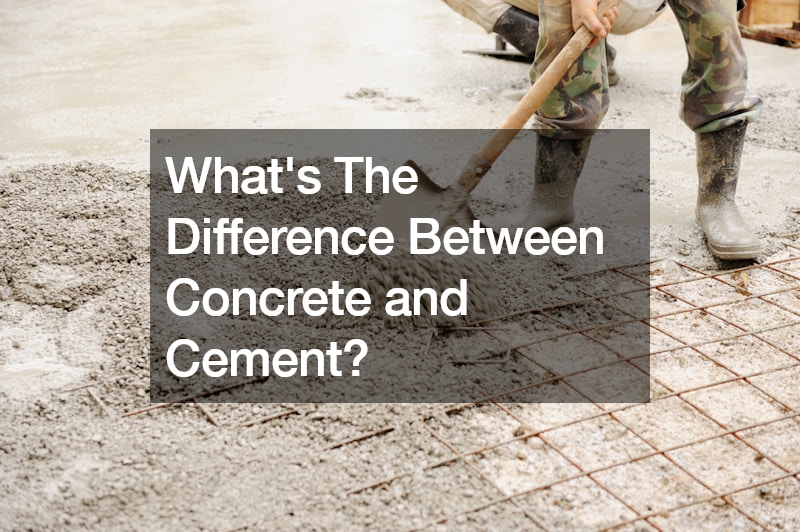Concrete: The Building Material
Concrete is a versatile construction material that forms the foundation of countless structures worldwide. It’s durable, strong, and adaptable, making it a favorite choice for builders. From skyscrapers to sidewalks, concrete is ubiquitous in the urban landscape.
Composition of Concrete
Concrete is primarily composed of four main ingredients: water, sand (fine aggregate), gravel (coarse aggregate), and cement. These ingredients are mixed together to form a paste-like substance that hardens over time.
The water acts as a catalyst, activating the cement and causing it to bind the other ingredients together.
Role of Cement in Concrete
Cement plays a crucial role in the formation of concrete. It is a powdery substance made from limestone and other materials, which are heated in a kiln and then ground into a fine powder. When mixed with water, cement undergoes a chemical reaction known as hydration, forming a paste that binds the aggregate materials together. In essence, cement acts as the glue that holds concrete together.
The Misconception: Cement vs. Concrete
One common misconception is the interchangeable use of the terms “cement” and “concrete.” While they are related, they are not synonymous. Cement is just one component of concrete construction, whereas concrete is the finished product used in construction projects. So, when someone refers to “pouring cement,” they are likely referring to the process of pouring concrete.
Understanding Cement
Cement is the binding agent in concrete construction. It gives concrete its strength and durability, allowing it to withstand immense pressure and weight. There are different types of cement available, but the most common type used in concrete construction is Portland cement.
Differentiating Between Cement and Concrete
To illustrate the difference between cement and concrete, imagine baking a cake. Cement is like the flour in the cake batter, it’s a crucial ingredient that binds everything together. On the other hand, concrete is like the finished cake, it’s the solid, sturdy structure that results from combining various ingredients, including cement.
Applications of Concrete Construction
Concrete construction encompasses a wide range of applications, from building foundations and roads to bridges and dams. Its versatility and durability make it suitable for nearly any construction project, large or small. Whether it’s a high-rise building or a simple sidewalk, concrete is the go-to material for builders worldwide.
Advantages and Disadvantages of Concrete Construction
Concrete offers numerous advantages such as durability, versatility, and fire resistance, making it a popular choice in construction. Its ability to withstand harsh weather conditions and provide long-term stability is unmatched. However, concrete construction also has its drawbacks, including susceptibility to cracking, heavy weight, and environmental impact. Understanding both the pros and cons can help builders make informed decisions when choosing construction materials.
Sustainable Practices in Concrete Production
With growing concerns about environmental sustainability, the concrete industry is evolving to reduce its carbon footprint. Practices such as using recycled materials, incorporating alternative cementitious materials, and optimizing production processes are becoming increasingly common. These sustainable practices aim to minimize resource consumption, lower greenhouse gas emissions, and promote eco-friendly construction methods.
Innovations and Advancements in Concrete Technology
Concrete technology is constantly evolving, with ongoing research and development leading to innovative materials and construction techniques. Advancements in self-healing concrete, high-performance mixes, and 3D printing are revolutionizing the way concrete structures are designed and built. Staying updated on the latest developments can help construction professionals optimize efficiency and enhance the quality of their projects.
Practical Tips for Concrete Maintenance
Maintaining concrete structures is crucial for preserving their integrity and ensuring longevity. Here are some practical tips to help property owners and construction professionals effectively maintain concrete surfaces:
Regular Cleaning: Keep concrete surfaces clean by removing dirt, debris, and organic matter regularly. Use a mild detergent or concrete cleaner and a pressure washer to remove stains and grime. Avoid using harsh chemicals that can damage the concrete.
Sealing: Apply a quality sealant to concrete surfaces to protect them from moisture penetration, stains, and UV damage. Sealants help prolong the life of concrete by creating a barrier that prevents water and contaminants from infiltrating the surface.
Preventing Cracks: Minimize the risk of cracking by controlling factors such as temperature fluctuations, moisture exposure, and structural movement. Use expansion joints and control joints to accommodate concrete expansion and contraction, reducing the likelihood of cracks forming.
Repairing Damage Promptly: Inspect concrete surfaces regularly for signs of damage, such as cracks, spalling, or surface erosion. Address any issues promptly to prevent further deterioration. Repair cracks and damaged areas using suitable concrete patching materials and techniques.
Protecting Against Chemical Damage: Avoid exposing concrete surfaces to harsh chemicals, including de-icing salts, acids, and solvents. These substances can corrode the concrete and weaken its structure over time. Implement protective measures such as applying sealants and using chemical-resistant coatings to safeguard against chemical damage.
By following these practical tips for concrete maintenance, property owners can preserve the appearance and structural integrity of concrete surfaces, prolonging their lifespan and minimizing the need for costly repairs. Regular maintenance efforts contribute to safer, more durable, and aesthetically pleasing concrete structures.
Conclusion
In summary, while cement and concrete are related, they serve different purposes in construction. Cement is the binding agent that holds concrete together, while concrete is the final product used in construction projects. Understanding the distinction between the two is essential for anyone involved in construction or building projects. So, the next time you hear someone mention “cement,” remember that it’s just one part of the broader picture of concrete construction.
.








